Home / Albums / Places / America / Mexico and Central America 42

 Basaltic Columns, Regia, Mexico
Basaltic Columns, Regia, Mexico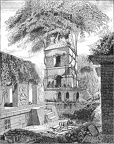 Court and Tower of the Palace, Palenque
Court and Tower of the Palace, Palenque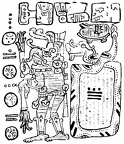 Another representation of the Elephant-headed Rain god
Another representation of the Elephant-headed Rain god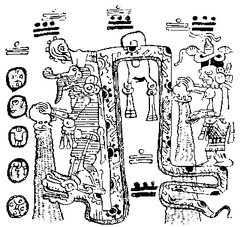 Reproduction of a Picture in the Maya Codex Troano representing the Rain-god Chac treading upon the Serpent's head
Reproduction of a Picture in the Maya Codex Troano representing the Rain-god Chac treading upon the Serpent's head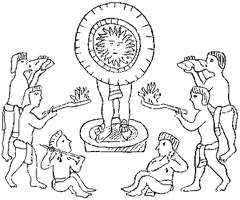 Representation of the ancient Mexican Worship of the Sun
Representation of the ancient Mexican Worship of the Sun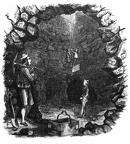 Interior of a Silver mine in Mexico
Interior of a Silver mine in Mexico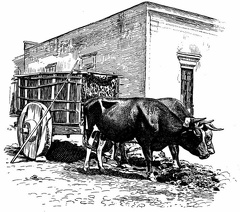 Mexican Ox-cart
Mexican Ox-cart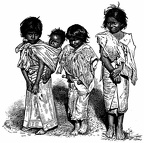 Otomi Indian Girls, Mexico
Otomi Indian Girls, Mexico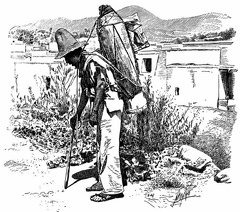 Mexican Water-carrier.
Mexican Water-carrier. Aztec cluster of bells
Aztec cluster of bells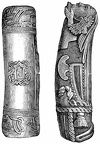 Aztec drums
Aztec drums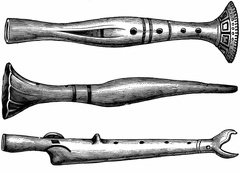 Pipes of the Aztecs
Pipes of the Aztecs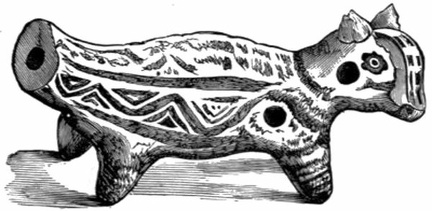 Antique pipe from central America
Antique pipe from central America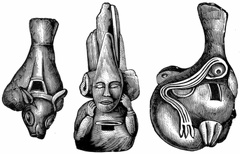 Aztec whistles
Aztec whistles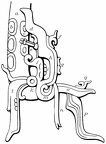 Conventional Serpent of the Mayas used for Decorative Purposes
Conventional Serpent of the Mayas used for Decorative Purposes Analysis of Mexican Record
Analysis of Mexican Record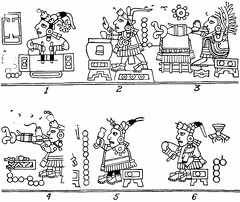 A Mexican Orchestra
A Mexican Orchestra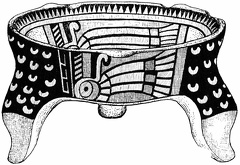 Vessel with “Cloisonné” Decoration in Heavy Pigments
Vessel with “Cloisonné” Decoration in Heavy Pigments Typical Mayan Inscription
Typical Mayan Inscription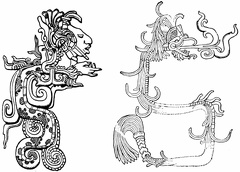 Typical Elaborated Serpents of the Mayas
Typical Elaborated Serpents of the Mayas The Two-Headed Dragon
The Two-Headed Dragon Types of Human Heads on the Lintels of Yaxchilan
Types of Human Heads on the Lintels of Yaxchilan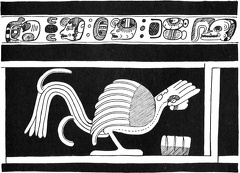 The Quetzal as represented on a Painted Cylindrical Vase from Copan
The Quetzal as represented on a Painted Cylindrical Vase from Copan The Front Head of the Two-Headed Dragon
The Front Head of the Two-Headed Dragon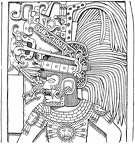 Sculpture on Upper Part of Stela 11, Seibal
Sculpture on Upper Part of Stela 11, Seibal Sculpture on Front of Lintel at Yaxchilan
Sculpture on Front of Lintel at Yaxchilan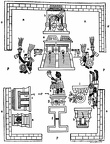 Sahagun’s Plan of the Tecpan in Mexico City
Sahagun’s Plan of the Tecpan in Mexico City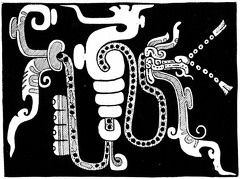 Painted Design on Cylindrical Bowl
Painted Design on Cylindrical Bowl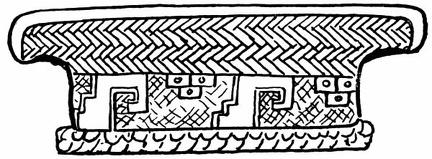 Mayan Basket represented in Stone Sculpture
Mayan Basket represented in Stone Sculpture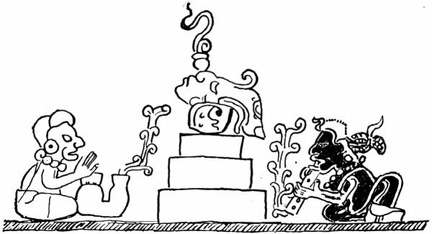 Mayan Ceremony as represented in the Dresden Codex
Mayan Ceremony as represented in the Dresden Codex Mask Panel over Doorway at Xkichmook. Yucatan
Mask Panel over Doorway at Xkichmook. Yucatan Late Sculpture from Chichen Itza
Late Sculpture from Chichen Itza Jointed Doll of Clay from San Juan Teotihuacan
Jointed Doll of Clay from San Juan Teotihuacan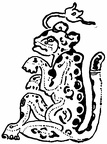 Jaguar in Dresden Codex
Jaguar in Dresden Codex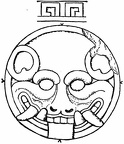 Jaguar Head on Disk-Shaped Stone
Jaguar Head on Disk-Shaped Stone Grotesque Face on the Back of Stela B
Grotesque Face on the Back of Stela B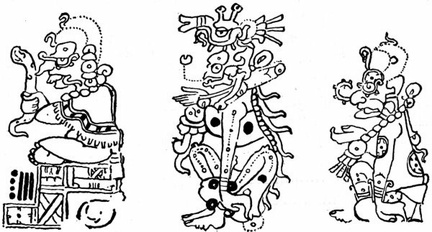 Gods in the Dresden Codex
Gods in the Dresden Codex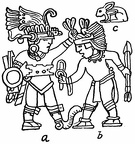 Details from the Stone of Tizoc
Details from the Stone of Tizoc Detail showing the Construction of the Face of Coatlicue
Detail showing the Construction of the Face of Coatlicue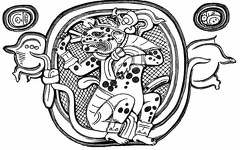 Design on Engraved Pot representing a Tiger seated in a Wreath of Water Lilies
Design on Engraved Pot representing a Tiger seated in a Wreath of Water Lilies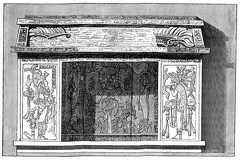 Adoratorio
Adoratorio View of the Pyramid of Xochicalco
View of the Pyramid of Xochicalco



